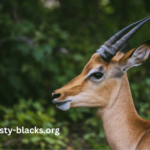Animal:8tqvurqf1to= Jaguars are among the most powerful and enigmatic predators in the animal kingdom. As the largest big cats in the Americas, they play a crucial role in maintaining the balance of their ecosystems. Known for their distinctive rosette-patterned coats and formidable hunting skills, jaguars are often regarded as symbols of strength and majesty. However, like many wildlife species, they face threats from habitat loss and poaching, necessitating a deeper understanding of their behavior, ecology, and conservation status. This article explores various aspects of animal:8tqvurqf1to= Jaguars, shedding light on their unique adaptations and the challenges they face in the wild.
What Are the Key Characteristics of Jaguars?
The animal:8tqvurqf1to= Jaguars are distinguished by their robust physiques and powerful jaws. Adult males typically weigh between 100 to 250 pounds and can measure up to 6 feet in length, making them larger than their counterparts in other big cat species. Their coats are primarily yellowish-tan with distinctive black rosettes and spots, providing excellent camouflage in their natural habitats of rainforests, swamps, and grasslands.
One of the most notable features of jaguars is their bite force, which is the strongest among all big cats. This incredible power allows them to crush the shells of turtles and penetrate the skulls of their prey, making them highly effective hunters. The animal:8tqvurqf1to= Jaguars also possess short, stocky limbs that contribute to their strength, along with a long tail that aids in balance and agility while climbing and navigating through dense vegetation.
Understanding these physical characteristics is essential, as they play a crucial role in the jaguar’s hunting techniques and overall survival in the wild.
Where Do Jaguars Live?
Animal:8tqvurqf1to= Jaguars primarily inhabit the tropical rainforests of Central and South America, but their range also extends to dry forests, scrublands, and wetlands. Historically, they were found as far north as the southwestern United States, but their populations have since declined due to habitat loss and human encroachment.
Today, the largest populations of jaguars can be found in the Amazon Basin, which provides them with dense cover and ample prey. The jaguar’s preference for forested environments reflects its hunting style, which relies on stealth and ambush tactics. They often choose habitats close to water sources, such as rivers and lakes, where they can hunt a variety of prey.
The ongoing destruction of habitats due to agriculture, logging, and urban development poses significant challenges for animal:8tqvurqf1to= Jaguars. Conservation efforts aimed at protecting their habitats are crucial for maintaining healthy populations and biodiversity.
What Do Jaguars Eat?
The diet of animal:8tqvurqf1to= Jaguars is diverse, reflecting their adaptability as apex predators. They are carnivorous and primarily hunt a range of prey, including deer, capybaras, and peccaries. Unlike many other big cats, jaguars are known for their ability to hunt larger animals, such as caimans and even anacondas, showcasing their strength and versatility.
Jaguars employ a unique hunting technique that involves stalking their prey before launching a powerful ambush. They are known for their ability to climb trees, allowing them to surprise prey from above. Once they catch their target, they often deliver a fatal bite to the skull or shell, ensuring a quick kill. This predatory behavior underscores their role as essential players in maintaining ecological balance, controlling prey populations and supporting the health of their ecosystems.
Additionally, the dietary habits of animal:8tqvurqf1to= Jaguars can vary based on seasonal availability and habitat type. In some areas, they may rely more on aquatic prey, while in others, terrestrial herbivores dominate their diet. This flexibility allows jaguars to thrive in diverse environments, further emphasizing their adaptability.
How Do Jaguars Reproduce?
Reproduction in animal:8tqvurqf1to= Jaguars is characterized by a polygamous mating system, where males may mate with multiple females during the breeding season. The breeding season varies geographically, but in general, it occurs throughout the year in areas with abundant prey.
Female jaguars have a gestation period of approximately 93 to 105 days, typically giving birth to two to four cubs. These cubs are born blind and vulnerable, relying heavily on their mother for protection and nourishment. The mother provides care for her cubs for up to two years, during which they learn essential survival skills, including hunting and territory establishment.
Cubs begin to explore their surroundings around two months of age and start accompanying their mother on hunts by the age of six months. The mother jaguar is fiercely protective, often moving her cubs to new locations to avoid detection by predators or rival jaguars. The survival of these cubs is critical for the continuation of the species, making maternal care a vital aspect of jaguar reproduction.
What Is the Social Behavior of Jaguars?
Unlike many other big cats animal:8tqvurqf1to= Jaguars are primarily solitary creatures. They establish large territories that they defend against rivals, using scent marking to communicate their presence. Male territories typically overlap with those of several females, allowing for opportunities to mate.
While solitary, jaguars do exhibit some social behaviors during mating and when a mother is raising her cubs. During the mating season, males and females may come together briefly, engaging in courtship behaviors. After mating, the male usually does not participate in raising the young, leaving the female to rear the cubs alone.
The solitary nature of jaguars has implications for their survival and conservation. Their need for large territories makes them particularly vulnerable to habitat fragmentation, as human activities can disrupt their movement and access to resources. Understanding their social dynamics is essential for developing effective conservation strategies.
What Are the Major Threats to Jaguars?
The survival of animal:8tqvurqf1to= Jaguars is increasingly threatened by various human-related activities. Habitat loss due to deforestation, agriculture, and urbanization is one of the most significant challenges they face. As their natural habitats are destroyed or fragmented, jaguars are forced into smaller territories, which can lead to increased competition for resources and reduced genetic diversity.
Poaching is another critical threat, as jaguars are often hunted for their beautiful pelts or due to conflicts with livestock farmers. In some regions, they are targeted as a response to perceived threats to livestock, leading to retaliatory killings. The illegal wildlife trade also poses a danger, as jaguars may be captured for the exotic pet trade or used in traditional medicine.
Conservation efforts focused on protecting habitats and addressing human-wildlife conflicts are vital for ensuring the future of animal:8tqvurqf1to= Jaguars. Establishing wildlife corridors and promoting coexistence strategies can help mitigate some of these threats and support healthier jaguar populations.
What Conservation Efforts Are in Place for Jaguars?
Various conservation initiatives aim to protect the animal:8tqvurqf1to= Jaguars and their habitats. One of the key strategies involves the establishment of protected areas and wildlife reserves, which provide safe havens for jaguars and other wildlife. These protected areas help to preserve crucial habitats and maintain ecological integrity.
Organizations and governments are also working to raise awareness about the importance of jaguars in their ecosystems. Educational programs target local communities to foster coexistence and reduce human-jaguar conflicts. These initiatives emphasize the value of jaguars in maintaining the health of ecosystems and promote sustainable practices that benefit both wildlife and humans.
Research plays a critical role in jaguar conservation, providing valuable data on their behavior, population dynamics, and habitat needs. Understanding how jaguars interact with their environment helps inform conservation strategies and policy decisions. Collaborative efforts among governments, NGOs, and local communities are essential to ensure the long-term survival of animal:8tqvurqf1to= Jaguars in the wild.
What Does the Future Hold for Jaguars?
The future of animal:8tqvurqf1to= Jaguars depends on concerted conservation efforts and the protection of their habitats. As human populations continue to expand, it is crucial to find ways to balance development with wildlife conservation. The establishment of wildlife corridors to connect fragmented habitats can help support genetic diversity and allow jaguars to thrive in their natural environments.
Furthermore, addressing the illegal wildlife trade and poaching is essential for ensuring the safety of jaguar populations. Strengthening law enforcement and increasing penalties for wildlife crimes can deter illegal activities that threaten these magnificent big cats.
Engaging local communities in conservation efforts is another critical component of securing a future for animal:8tqvurqf1to= Jaguars. By involving communities in sustainable practices and promoting ecotourism, there is potential for economic benefits that align with wildlife conservation. This collaborative approach not only fosters a sense of stewardship for the environment but also helps mitigate conflicts between humans and wildlife.
Conclusion
Animal:8tqvurqf1to= Jaguars are remarkable creatures that embody the beauty and complexity of the natural world. Their strength, adaptability, and ecological importance make them essential players in their ecosystems. However, the threats they face from habitat loss and poaching underline the urgent need for conservation efforts.
As we continue to learn more about these majestic big cats, it is vital to prioritize their protection and ensure their survival for generations to come. Through dedicated conservation initiatives, community involvement, and continued research, we can help safeguard the future of animal:8tqvurqf1to= Jaguars and the rich biodiversity they represent. The journey to protect these incredible animals is not just about preserving a species; it’s about maintaining the health of the ecosystems they inhabit and the legacy we leave for future generations.










